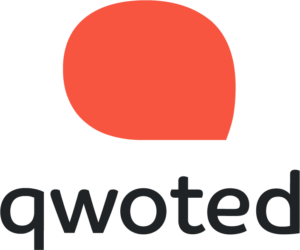Qwick Takes: Cost increases across industries are fueling inflation
This week, Talking Biz News Deputy Editor Erica Thompson reached out to Qwoted’s community of experts to inquire about the effects of supply chain disruptions and soaring costs on small and medium-sized businesses.
Check out some of the top commentary:
Fergus Hodgson, Director at Econ Americas:
Spiral is a strong word. However, yes, inflation could remain at 5 percent or even go higher. Since US inflation stems from two key causes—expansionary policy and economic impediments—the solution is to resolve the two. That means fiscal and monetary austerity and a complete reopening of the economy across all states and borders. Without those two problems resolved, pressure on prices from a devalued dollar will remain. Further, economists and the layman alike will raise their inflation expectations and generate inflation inertia. To make matters worse, should there be another negative economic shock, we would be in the midst of serious stagflation.
Gary Schlossberg, Global Strategist at Wells Fargo Investment Institute:
Rising costs and prices are the result of supply-chain disruptions and labor shortages. Dislocations were aggravated by a powerful, “V”-shaped economic cycle, encouraging a consolidation by businesses during the economy’s freefall that left them flat-footed when the economy came roaring back beginning last spring. Our view is that inflation will remain elevated through most of 2022, as dislocations filter through other parts of the economy.
Still to come are accelerated increases in rents, about 30% of the CPI and affected both by a general shortage of units and by a market readjustment after the exodus from core urban areas during the worst of the pandemic last year. Ultimately, we’re looking for inflation to subside from its current 5% rate as the market adjusts to the imbalances created by the pandemic and its aftermath. However, we expect inflation to steady, for a time, at about 2.5%-3% before moving a bit lower, still materially above its 1.7% p.a. average in the decade before the pandemic.
Greg McBride, Senior Vice President & Chief Financial Analyst at Bankrate:
At the start of the pandemic, too much cash was chasing too few public companies. As a result, the proverbial IPO window opened and companies returned to U.S. listings.
SPACs are one mechanism for bringing early-stage companies to public markets. There is nothing inherently wrong with investing in an early-stage company, but such investments are fundamentally different than investments in established Dow darlings.
What we see today can be characterized as growing pains. Both investors and regulators are learning how to navigate the variability in SPAC targets and the associated volatility in trading.
When this is combined with a potentially over-saturated market given the number of SPACs currently on the hunt for acquisition targets, we can expect to see some of the early exuberance tamed.
Check out the original blog on TalkingBizNews.
Ready to pitch?
POPULAR POSTS
